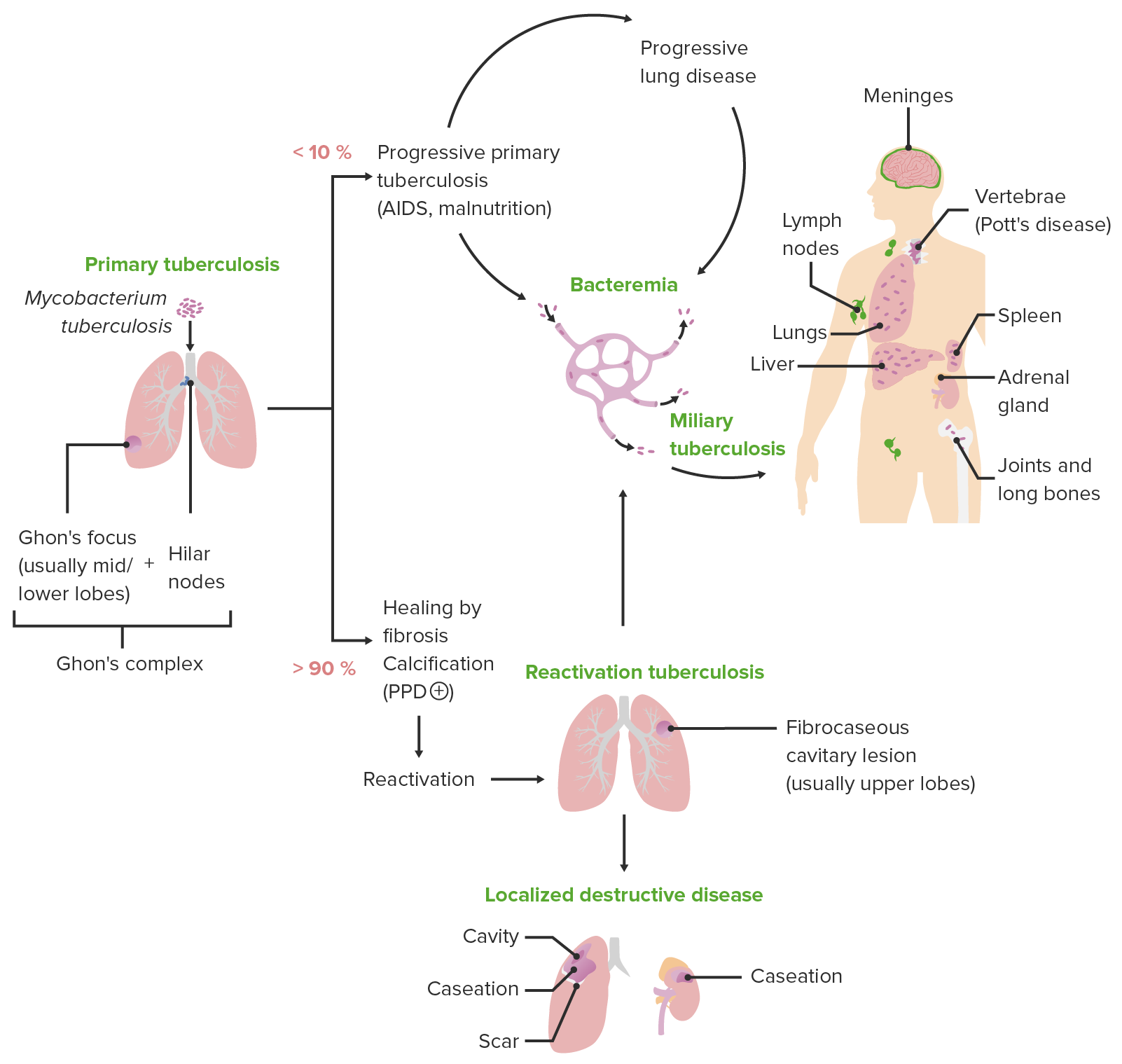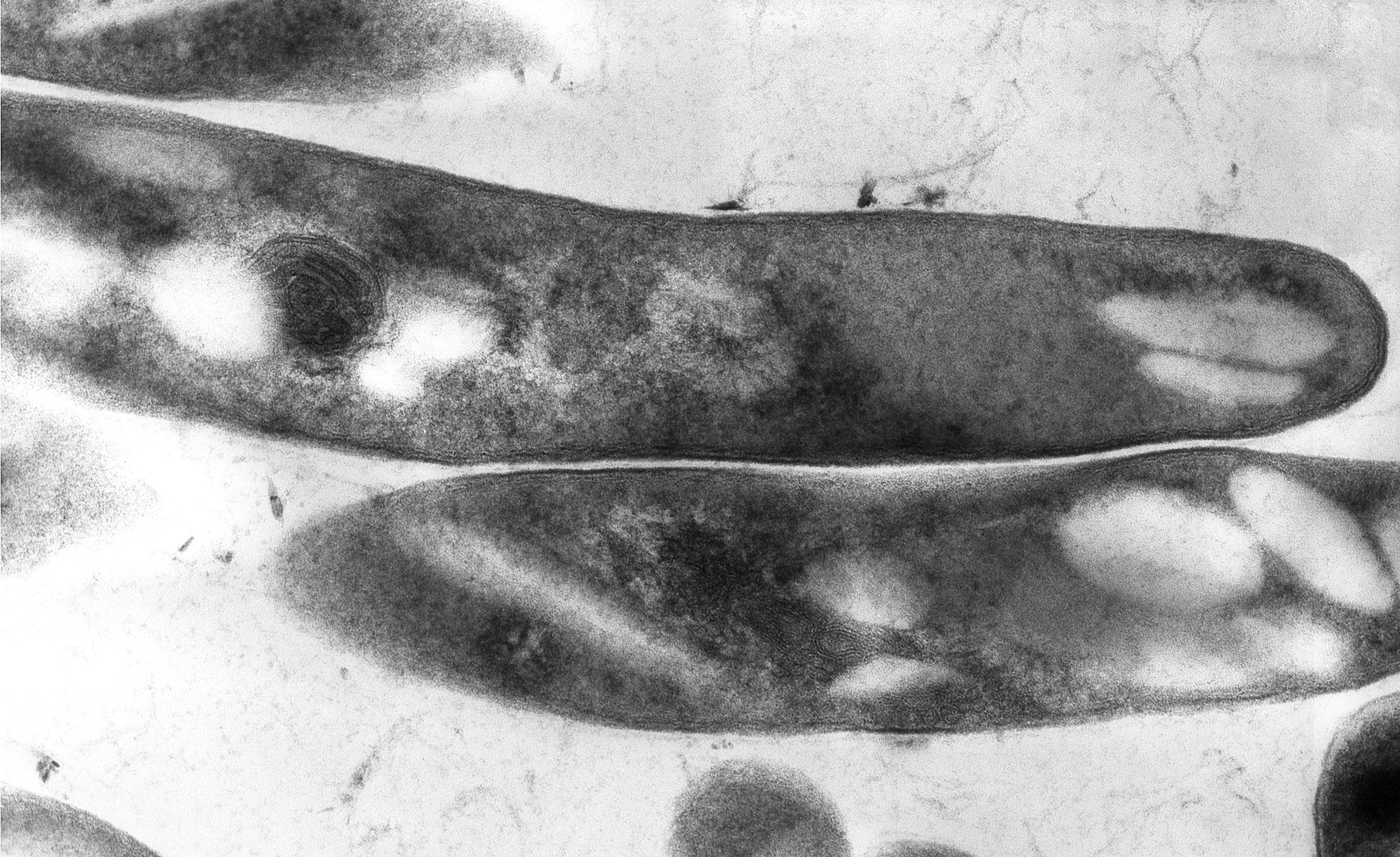Playlist
Show Playlist
Hide Playlist
Mycobacterium
-
01-07 Mycobacteria.pdf
-
Download Lecture Overview
00:01 Mycobacterium, bacteria. 00:03 The mycobacteria are a large group of bacteria, in fact, so large as to represent their own genus of organism. 00:12 As a genus, the mycobacteria are obligate aerobes and they are facultatively intracellular, they grow best within a cellular target. 00:24 However, when appearing under a microscope, they are elongated with the shape of a rod or a bacillus. 00:31 Importantly the cell wall of the mycobacteria, all of them, is rich in mycolic acid, again another feature sometimes seen in fungus. 00:40 And it is the staining of that mycolic acid which makes them acid fast. 00:45 As you can see in the slides, the right, there are several versions of red appearing or acid fast rod-like organisms which represents mycobacteria in their tissue species. 00:58 We look at several different types of mycobacteria as causing typical or atypical disease. 01:05 When one thinks of typical mycobacterial illness, one immediately thinks of mycobacterium tuberculosis, the cause of tuberculosis. 01:14 However, there are several other subspecies of mycobacteria which also cause clinically important diseases which are typical. 01:22 Mycobacterium bovis, that which is associated with as you guessed it, a bovine or a cow-source, also can cause disease closely resembling that of straightforward tuberculosis. 01:34 Mycobacterium leprae, which causes leprosy, is completely different but again still exists in the typical pathway of disease with mycobacteria. 01:44 In the atypical forms, there are multiple organisms, three of which you see listed on the slide. 01:50 Mycobacterium avium -- intracellulare, sometimes abbreviated, MAI for short or even you heard the term, MAC, Mycobacterium avium complex, MAC. 02:01 Also in that group Mycobacterium kansasii and Mycobacterium scrofulaceum. 02:07 These will all be called atypical mycobacteria or many times to distinguish them from typical forms, they might be called, nontuberculous mycobacteria, NTM.
About the Lecture
The lecture Mycobacterium by Sean Elliott, MD is from the course Bacteria.
Included Quiz Questions
The cell wall of Mycobacterium contains which acid that makes it an acid-fast bacillus?
- Mycolic acid
- Oxalic acid
- Carbonic acid
- Boric acid
- Acetic acid
Customer reviews
5,0 of 5 stars
| 5 Stars |
|
5 |
| 4 Stars |
|
0 |
| 3 Stars |
|
0 |
| 2 Stars |
|
0 |
| 1 Star |
|
0 |






